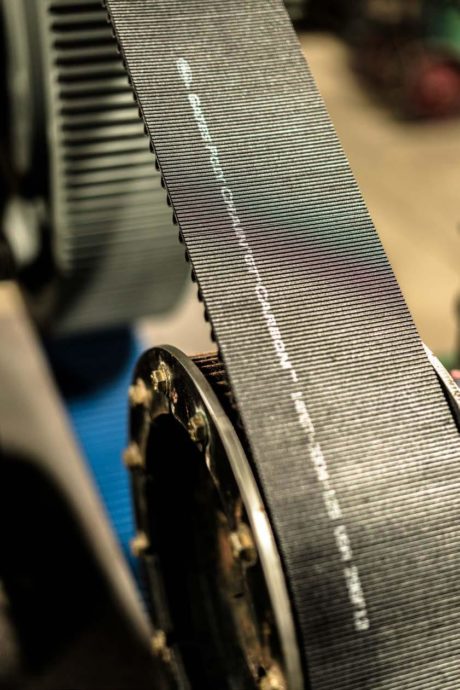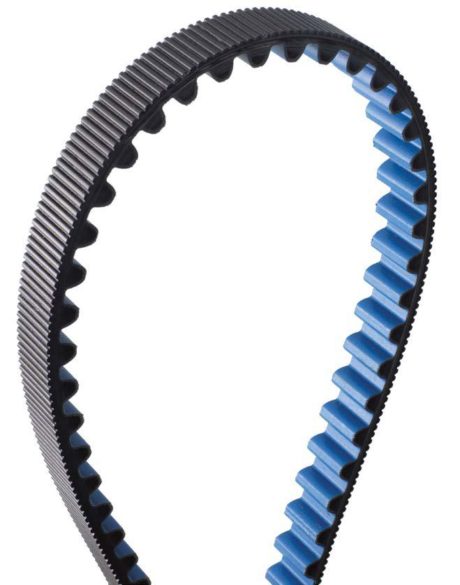The definition of lean manufacturing boils down to one simple principle: maximize productivity by reducing waste. The process to achieve waste reduction is to eliminate the non-essential components of production to increase efficiency, effectiveness and ultimately, profitability.

In industrial businesses and manufacturing companies, one important way to reduce waste is to evaluate the key components of the manufacturing process including safety, quality, delivery and cost (SQDC) practices. Many manufacturers find significant opportunities for improvement when they evaluate whether or not their current power transmission systems, such as roller chain and gearboxes, are the most optimal solution for their organization. While historically roller chain equipment has been used across industries, it has a number of limitations.
With advances in materials, technology and process engineering, many operations are modernizing their equipment, breaking with the past, and switching to advanced belt drive systems. Whether you are already considering a conversion to belts or are an OEM designing a new manufacturing system, synchronous belts are steadily emerging as the new standard for power transmission as they consistently deliver improved safety, enhanced quality, streamlined delivery and are extremely cost effective.
Improved Safety
Your people matter — to both your business and your bottom line. By identifying and eliminating potential hazards, you not only improve employee working conditions, you increase productivity and maximize operational efficiency.
Roller chains require significant, hands-on maintenance, introducing the opportunity for a variety of employee safety risks. Installation demands employees work with extremely heavy chains that can be difficult to maneuver and position, leading to muscle strains or crush injuries. To then operate effectively, roller chain requires continual lubrication, either via a manual lubrication process or an oil bath, further increasing the possibility of employee accidents, such as slips and falls, or even a facility fire. Moreover, the nature of the maintenance process itself can lead to substantial and even life-limiting injuries such as lost fingers or limbs.
Another challenge with roller chain, especially in larger manufacturing facilities, is that it can be quite loud. Aside from creating an unpleasant working environment, habitual exposure to loud noise puts employees who don’t wear hearing protection at risk for noise-induced hearing loss. Yet insisting employees wear hearing protection isn’t the end-all be-all solution as it’s often described as a nuisance that can limit communication between employees, leading to inefficiencies, errors and even injuries.
Making the switch from a chain to a belt immediately improves the safety conditions for your employees and your operations. Belts require zero maintenance as they do not stretch, eliminating the need for re-tensioning work, and do not need lubrication. This means that with a belt drive the oil-related safety concerns are no longer an issue, reducing overtime maintenance demands on your people.
For example, after converting to a belt drive, an asphalt company in New England no longer had to incur the risk, and significant cost associated, to rent a crane every few months for employees to perform maintenance on its roller chain systems. The elimination of this dangerous and time consuming process, much of which had to be completed outside of production hours, has helped the company save on their maintenance budget, reduce overtime demands and help improve mechanic and operator retention.
Belts also weigh less than their chain counterparts. The Gates Poly Chain GT Carbon belt, for example, is 97% more light-weight when compared to chain. The lighter weight helps improve ergonomics, reducing employee fatigue and strain, making installation, general maintenance and replacement much more manageable. The risk of crushing and pinching injuries caused by heavy chain is also eliminated.
Synchronous belt drive systems also run quiet. By reducing the exposure to loud noise and decreasing potential issues due to limited communication capabilities, belts improve operating conditions and create a more pleasant work environment.

Enhanced Quality
Many manufacturers produce high quality products that, through critical processes, are required to meet certain industry specifications and regulations.
In the food and beverage or pharmaceutical industry, contamination during the production process is unacceptable and can lead to standing inventory, wasted product or recalls. It is imperative that equipment remains clean and the reduction of contamination is a top priority. Food handling spaces, for example, require constant washdowns which can cause rust contamination.
Not to mention, the cleaning process often washes away the lubrication required for chain to function properly, creating a continuous need to re-lubricate. It’s a vicious, and potentially costly, cycle.
One solution to reduce the risk of contamination and improve the quality of your products is to use synchronous belt drives in facilities that operate within the highly regulated industries that produce food, beverages, pharmaceuticals or delicate textiles. Since belts are inert to most acids, chemicals and water, they are an ideal solution for wet environments; belts are also easier to clean and more resistant to microbial contamination. Thermoplastic polyurethane (TPU) belts are specifically designed for these types of environments and adhere to higher health and safety standards, meeting the FDA material requirement for wet food contact and can be USDA certificated for hygiene requirements in meat and poultry processing equipment. For manufacturers of small components, conveyor belts must combine accuracy and speed to support precision indexing. While achieving this level of automation is possible with roller chain, it can be both difficult and costly to maintain performance. Synchronous belts are again an optimal choice to replace chain, as they do not stretch over time and have optimized profiles to deliver the lowest backlash solutions.
Effective Delivery
Maximizing operations and productivity is often dependent on modern, automated industrial equipment. For many manufacturers, outdated power transmission systems, like chain and gearboxes, are stifling production line advancements. Gates Poly Chain belts allow manufacturers to innovate and differentiate with diverse solutions for operational challenges. With narrow drive packages and the ability to support high-torque applications, belts are an ideal solution in situations that require maximum product output, but have limited space constraints. Gates’ belts have extended lengths — up to 20 meters — making it possible to replace heavy roller chains and large gearboxes that have not been previously addressable by belt solutions. Gates’ belt lines also include many different options to meet a variety of pitch, size, temperature and conductivity requirements.
Having quality solutions that meet your specific requirements increases factory uptime, enhances production and ensures your customers get exactly what they need. This is why it is especially important, if you are making the conversion to belts, to align with a partner that has the knowledge and experience to fabricate a system to that is right for you. To keep up with changing customer demands, investing in the right solution to fit your needs is paramount.

Cost Efficiency
In addition to the benefits listed above, enhancing workplace safety, streamlining internal processes and improving quality control measures also impacts your bottom line. Advanced belt drive systems allow you to eliminate many occupational safety hazards, improving employee and facility safety, while reducing overtime maintenance demands, resulting in a more satisfied workforce with reduced organizational risk and liability. And seeing as much of the maintenance of roller chain involves oil, belts can also eliminate the risk of regulatory fines due to oil spills and leaks which can cause ground or water contamination. Choosing the right power transmission solution for your products and industry will increase productivity with fewer production issues and enhance the quality and value of your products.
Requiring zero maintenance, belts also often last three times longer than the average chain. The Gates Poly Chain GT Carbon belt, for example, uses a patented combination of highly engineered carbon fiber tensile cord and a low-friction nylon tooth surface to increase the life span. Lower maintenance work and longer product life both reduces the costs associated with employee maintenance activities and increases factory uptime, allowing organizations to produce more with the same equipment. While investing in a belt drive conversion does require an upfront cost, the payoff will outweigh the investment and decrease your total cost of ownership over the long term. Upgrading to a synchronous belt drive, for instance, will easily pay for the replacement costs in 6–12 months, depending on the industry. Installation of a belt drive solution in new equipment brings immediate value to the user and can be a point of differentiation for the manufacturer.
For example, a sawmill, generating 650,000 board feet a day of lumber, found it was spending roughly $30,000 every 18 months in equipment and operational costs to replace the output shaft on its gearbox. The company decided to convert to a belt drive system, and, while the original purchase price for the system was similar to that of a gearbox, that same system has been operational for six years with no downtime or breakage. Having gained incredible cost efficiency, the company is gradually converting all its gearboxes to multi-stage belt drive reducers.
Making the Switch
The benefits of converting to an advanced belt system, replacing roller chain or gearboxes, are clear – especially for organizations interested in the lean manufacturing process. As you determine your next steps, I recommend you weigh the initial cost of conversion to the increased safety, quality, delivery and cost effectiveness you will likely experience over time. You may be surprised how much your organization will benefit.
Read more: www.gates.com



